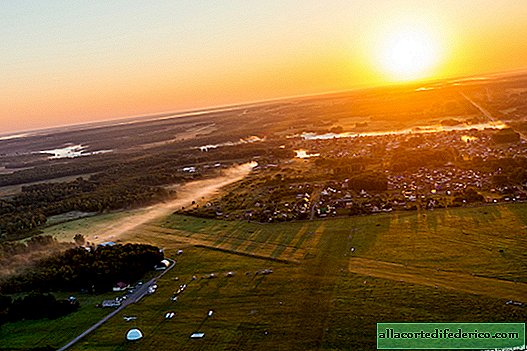What will the Earth be like in 50,000 years
The prediction of the future of the Earth resembles the prediction of the weather: the farther forward you look, the less accurately you can guess. Therefore, it seems that it is impossible to predict the future of the planet. But this is not entirely true: we have 4 billion years of history behind us, from which we can learn lessons. Knowing approximately what path the Earth has already traveled, we can continue to form our planet in the foreseeable future on the basis of evolution, extinction, plate tectonics, climate change.
Ice Age-5
The first thing we know about the Earth is that it is a planet that rotates around its axis, revolving around the Sun. These movements have certain consequences for living organisms. For example, the Earth not only rotates around its axis, but also changes its direction. Astronomers call this precession and say that every 26,000 years an axis points to different parts of the sky. For example, the North Pole is now pointing to the North Star. In 13,000 years, Vega will become our new signpost to the north. And after 50,000 years, the Earth will complete two cycles of precession, returning to its current state.

More significant are the changes that occur due to the inclination of the Earth's axis and changes in the Earth's orbit around the Sun. During the 97,000-year cycle, the Earth’s orbit changes from the shape of a large circle to elliptical. At the same time, the inclination of the earth's axis shifts by several degrees in the interval from 22.1 degrees to 24.5 degrees. Together, these changes greatly affect how much solar energy our planet receives.
When the Earth is located more “directly”, an ice age occurs on the planet: a thick layer of snow and ice covers a significant part of the land. Historically, the ice age lasted about 100,000 years, with warmer interglacial periods lasting about 10,000 years. The Earth is currently enjoying one of these interglacial periods, but will eventually enter an era of new glaciation.
Many scientists believe that the next ice age will peak in about 80,000 years. Thus, after 50,000 years, it will probably be much colder on Earth, and the ice crust will cover areas below New York.
But first it will be hot
But what about the global warming that everyone is talking about? How will it affect the scenario for the next ice age?
Scientists say there is little in the long run. However, in the near future, global warming could radically change our world. Its effects will be felt in the next 200 years. During this period, the level of carbon dioxide in the atmosphere will be higher than at any time over the past 650,000 years. Carbon dioxide will become an obstacle to the reflection of solar energy back into space, which will lead to significant heating of the planet.

As the average temperature rises even a couple of degrees, the glaciers will melt, sea level will rise, flooding the coast. The oceans will become warmer and more acidic, leading to massive destruction of coral reefs. Many marine species will die out. And not only them: on land a quarter of all species of plants and animals will disappear forever.
We can do without an asteroid
This will be a critical time for our planet, and it may seem that it will not be worse. Unfortunately, the history of the Earth teaches us that global apocalypses periodically occur and there is no escape from them.

In 50,000 years, we will almost certainly face a catastrophe that will forever change the planet. In the past, comets and asteroids fell to Earth, but this happens on average once every millions of years, so you can breathe out for the next 50,000 years. The Earth itself presents a much greater danger: the same tectonic forces that make continents wander around the world are awakened by supervolcanoes, which have enough ash and smoke in the atmosphere to block the sun's rays for 10-15 years. Geologists believe that such eruptions occur every 50,000 years, so the odds are not in our favor.
Based on materials from HowStuffWorks.com

















